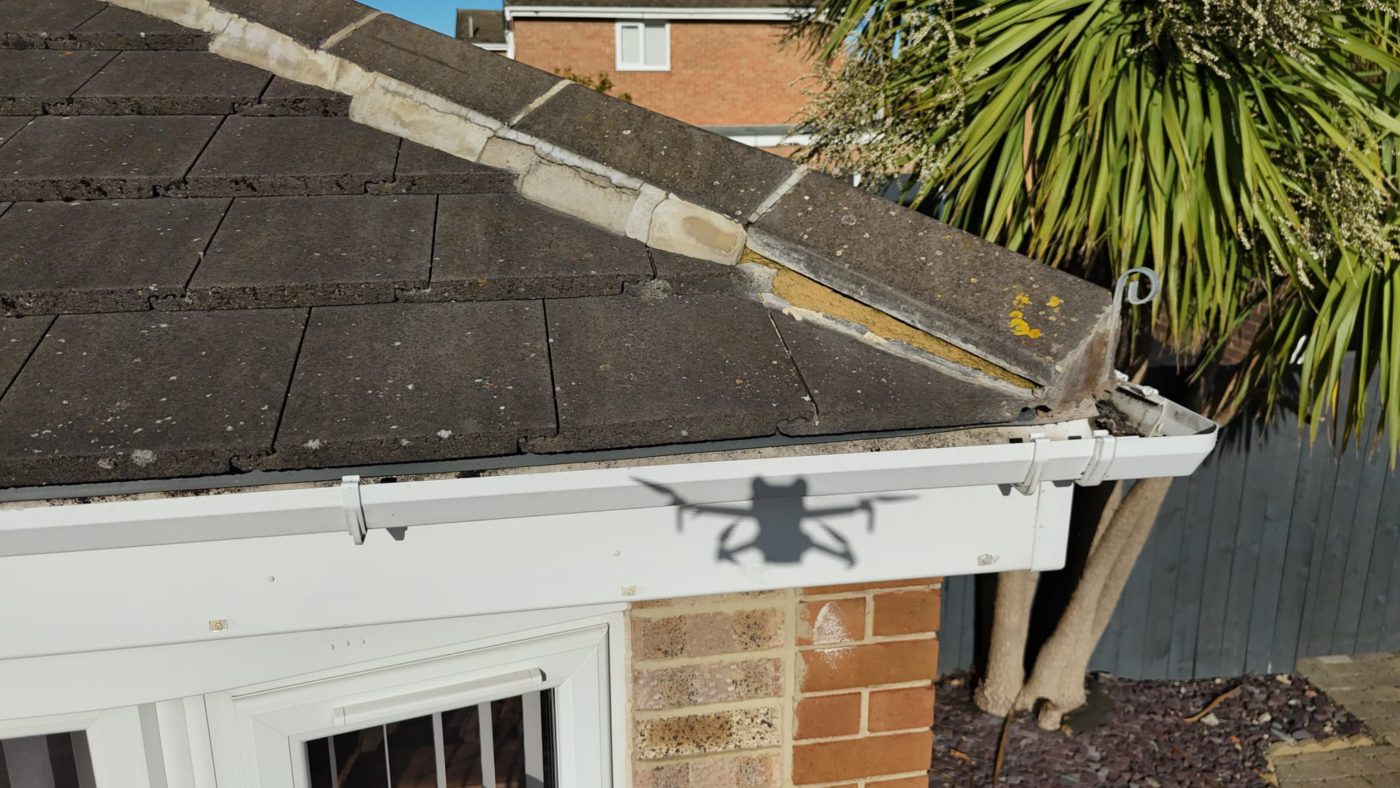How Do I Know When Ridge Tiles Are Failing?
Your ridge tiles are the unsung heroes of your roof. They’re the tiles that run along the very top, where both sides of the roof meet — sealing the line against wind, rain, and frost. Because of their exposed position, ridge tiles take the brunt of the weather, and over time, they can start to fail.
Spotting the signs early can save you money and prevent water from finding its way inside your home.
1. Cracked or Loose Ridge Mortar
Traditional ridge tiles are bedded on mortar. Over the years, constant temperature changes and wind movement cause that mortar to crack or crumble.
I usually tell homeowners to look out for missing pointing, or a fine line running along the ridge where the mortar and tile have started to separate.
That’s one of the clearest signs that the bond has broken down. Once the bedding starts to fail, the ridge tiles lose stability — and the next strong gust could lift them completely.
2. Movement or Lifting at the Roof Line
A ridge tile should sit firmly in place. If you notice any that appear slightly raised or uneven, it’s a sign the mortar underneath has failed or the mechanical fixing has come loose.
In high winds, a lifted ridge can turn into a missing ridge — which leaves your roof exposed and unsafe.
3. Leaks or Damp Patches Inside
It’s actually quite rare to get water ingress purely from ridge tiles.
Usually, leaks come from a cracked or slipped tile lower down the roof, allowing water to run underneath.
That said, if you’re in a building where you can’t see the ridge line clearly — such as a converted loft or a steep roof — it is possible. The ridge sits at the highest point, so water can find its way in if the mortar and felt beneath have both failed.
In most cases, when a ridge leak does happen, it’s been off for some considerable time. By that point, the felt underneath has often rotted away, and the damage is usually obvious from inside the loft — you’ll see daylight coming through the gaps where the ridge bedding has gone.
4. Debris in Gutters or on the Ground
Bits of mortar in your gutters or on your driveway after a storm can be another clue. It means your ridge bedding is starting to break down and wash away.
5. Age and Weather Exposure
If your roof is over 15–20 years old and hasn’t had its ridge line inspected, it’s worth getting it checked. The freeze-thaw cycle we get around Redcar and Cleveland can slowly break down mortar over time.
6. Old Mortar Bedding vs Modern Dry Ridge Systems
Older roofs rely on mortar alone, but most modern installations use dry ridge systems — mechanically fixed ridges with ventilation and no need for cement.
They’re stronger, longer-lasting, and comply with the latest British Standards (BS 5534).
If you still have traditional mortar-bedded ridges, it might be worth upgrading next time repairs are needed.
7. Safety First
Ridge tiles are right at the roof’s highest point — so don’t climb up to check them yourself.
If you’re unsure, it’s best to have a professional roofer inspect the ridge safely.
In some cases, I’ve seen ridge tiles come completely loose and fall from the roof, landing on parked cars below. Most people assume their home insurance will simply cover the damage — but in reality, cars are parked at their owner’s risk, even if it’s your own driveway.
What’s more, some insurance companies are now pushing back, holding homeowners responsible if they haven’t had their roofs inspected or maintained regularly.
A ridge tile that’s been loose for months could be classed as negligence rather than storm damage.
That’s why I always recommend having your roof checked once a year — a simple inspection could save you a major headache later.
Summary
Failing ridge tiles are easy to overlook but can cause serious problems if left too long.
Look out for:
-
Missing pointing or gaps along the ridge line
-
Ridge tiles that look uneven or lifted
-
Daylight visible through the ridge line from inside the loft
-
Bits of mortar in gutters or on the ground
-
Damage below the roof after strong winds
If you spot any of these signs, get them checked before the next spell of bad weather.
Need Your Ridge Tiles Checked?
We’ve been repairing and replacing ridge lines across Teesside for over 15 years. Whether you need a quick repair or a full dry ridge upgrade, our trained team can inspect your roof and advise on the best solution.
📞 Call Samuel Moore Roofing on 01642 777707
or
📩 Visit www.samuelmooreroofing.co.uk to book a free roof check.

